 Product Overview
Product Overview
The 3671 Series Vector Network Analyzers include the following models:
-
3671C: 100 kHz to 14 GHz
-
3671D: 100 kHz to 20 GHz
-
3671E: 100 kHz to 26.5 GHz
-
3671G: 10 MHz to 43.5 GHz
This series offers a wide range of calibration methods, including frequency response, single-port, response and isolation, enhanced response, full two-port, and electrical calibration, ensuring accurate measurements under various test conditions.
The instrument supports multiple built-in display formats, such as:
-
Log Magnitude
-
Linear Magnitude
-
Standing Wave Ratio (SWR)
-
Phase
-
Group Delay
-
Smith Chart
-
Polar Plot
These formats enable comprehensive analysis of microwave network characteristics, including amplitude-frequency, phase-frequency, and group delay responses.
Externally, the 3671 series is equipped with a variety of standard interfaces, including USB, LAN, GPIB, VGA, and HDMI, facilitating seamless integration into automated test systems and easy data transfer.
While retaining the high-performance features, appearance, display quality, and user-friendly software interface of premium vector network analyzers, the 3671 series also optimizes size, weight, and fan noise, delivering an enhanced user experience.
This product is widely used in fields such as communications, navigation, and aerospace, serving as an essential testing solution for research, development, and production of RF and microwave components and systems.
 Key Features
Key Features
Human-Centric User Interface, Easy to Operate, Significantly Enhancing Testing Efficiency
|
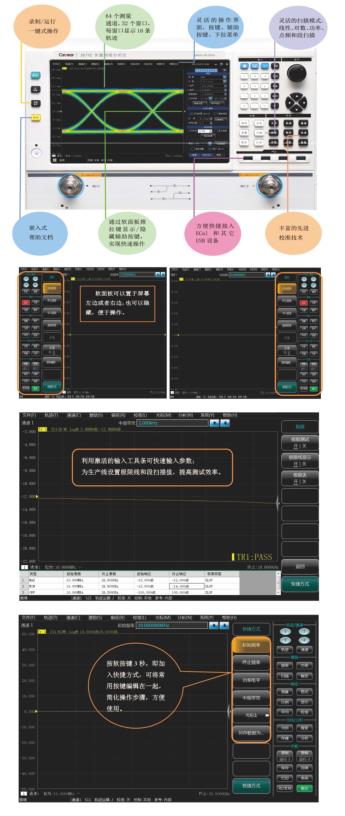
|
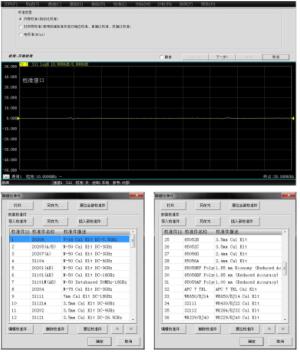
|
Flexible and Versatile Calibration Types, Compatible with Various Calibration Kits
The 3671 series vector network analyzer offers a wide range of calibration options to suit different testing requirements, including:
-
Wizard Calibration (automated calibration)
-
Non-wizard Calibration using mechanical calibration kits, supporting:
-- Through Response Calibration
-- Through Response and Isolation Calibration
-- Single-Port Calibration
-- Enhanced Response Calibration
-- Full Two-Port SOLT Calibration
-- TRL Calibration
-
Electronic Calibration (ECal)
Users can choose from various coaxial mechanical calibration kits or electronic calibration modules, enabling efficient and accurate measurements for devices with different interface types. This flexibility ensures seamless integration into diverse R&D and production test environments.
|
Multi-Window Display for All Measurement Channels
This product features a multi-channel and multi-window display function, supporting up to 64 measurement channels and allowing simultaneous display of up to 32 measurement windows. Each window can show up to 16 measurement traces at the same time, making the test results more intuitive and significantly enhancing user convenience and efficiency in analysis and debugging.
|

|
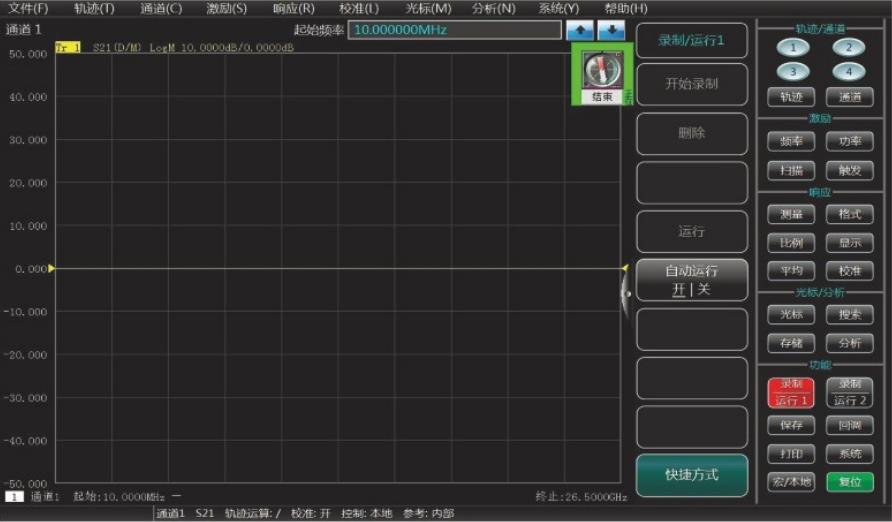
|
One-Key Automation Testing with Recording Function
The system supports a recording function that captures all operation steps performed during instrument use. Users can also insert custom editable prompt dialog boxes at any point in the recorded sequence. These prompts will pop up at the designated time, pausing execution until user confirmation is received, thereby enabling interactive automation.
This feature truly realizes smart, one-key automated testing, improving efficiency while ensuring accuracy and consistency in complex or repetitive test processes.
|
Wide Dynamic Range
The 3671 series vector network analyzer employs a fundamental mixing receiver design, effectively extending the overall measurement dynamic range of the instrument. This enables the system to meet demanding test requirements where high dynamic range is essential, ensuring accurate and reliable characterization of both weak and strong signals across a wide amplitude range.
|
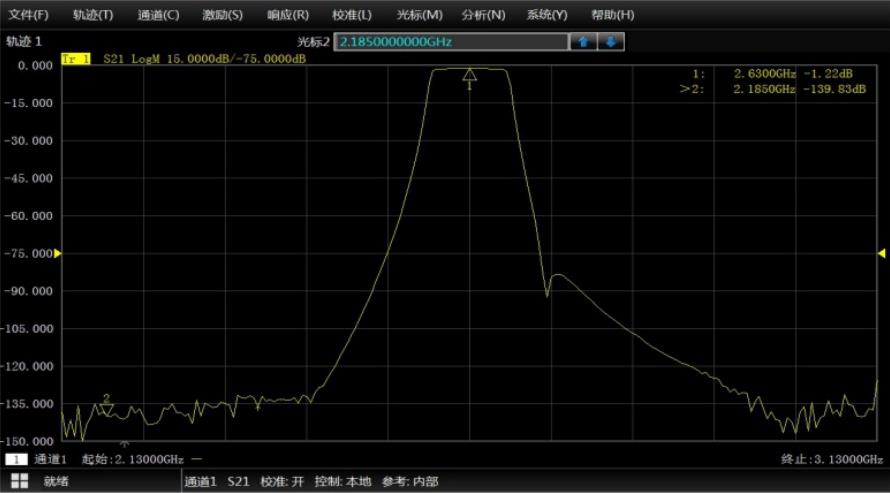
|
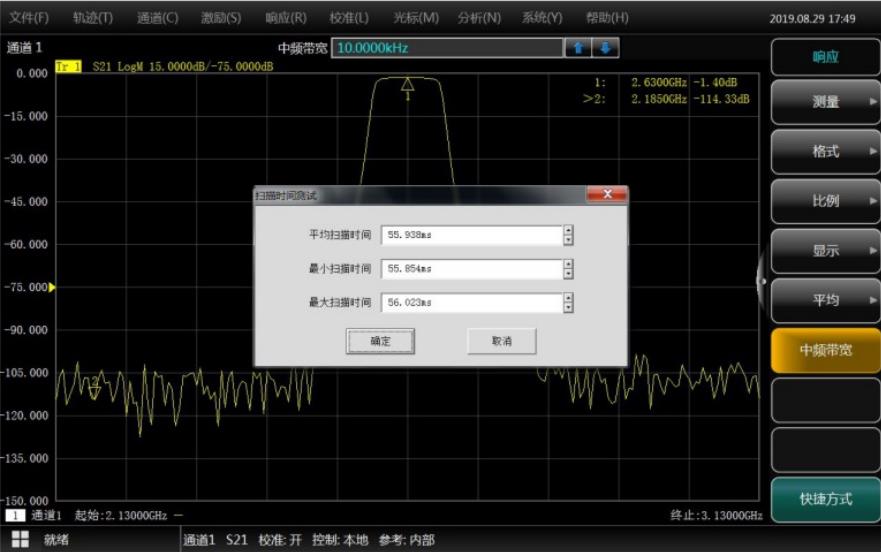
|
Significantly Enhanced Sweep Speed
The 3671 series vector network analyzer achieves a sweep speed of up to 43 ms (typical value) under full-band scanning with 201 points and an IF bandwidth of 600 kHz. It also provides a one-button sweep time test function, making it convenient for users to evaluate and optimize measurement efficiency. This high-speed performance greatly improves testing throughput in R&D and production environments.
|
Time Domain Analysis (Optional)
By configuring the time-domain measurement option, the 3671 series vector network analyzer enables seamless switching between frequency domain and time domain representations of the measurement results. This function is particularly useful for identifying discontinuities in devices, fixtures, or cables, allowing for precise fault location detection and analysis of signal integrity issues. It provides valuable support for troubleshooting and performance optimization in RF and microwave systems.
|
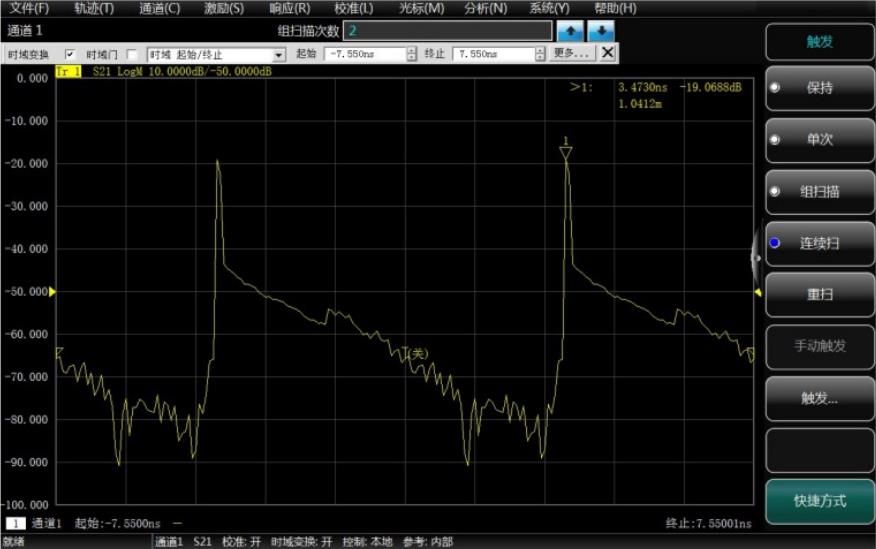
|
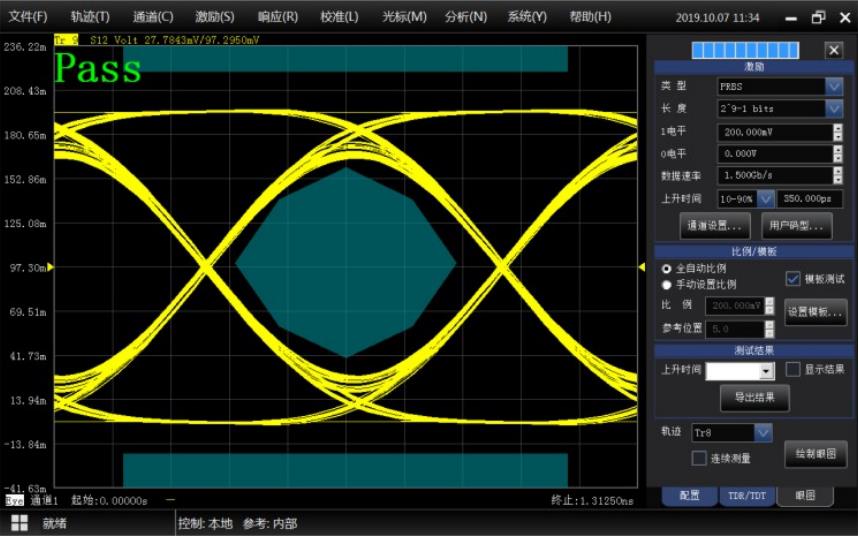
|
Advanced Time-Domain Analysis Option (TDR Option)
With the rapid development of the information industry, the demand for higher network bandwidth continues to grow. Information equipment — such as large servers, computers, and switches — must support increasingly faster data transmission rates. As a result, manufacturers are placing greater emphasis on signal integrity in high-speed interconnect channels. Variations in transmission link characteristics can significantly impact signal quality, making the Advanced Time-Domain Analysis Option an essential tool for evaluating the performance of high-speed links.
This option provides:
-
TDR (Time Domain Reflectometry) Impedance Testing, enabling precise detection of impedance variations along transmission lines and accurate localization of discontinuities.
-
Convenient Near-End and Far-End Crosstalk Measurement, allowing simultaneous analysis of both time-domain and frequency-domain data to evaluate the level of interference between multiple transmission lines.
The 3671 series vector network analyzer further supports virtual eye diagram generation and analysis based on S-parameters. A simulated pattern generation unit generates data bit sequences (0s and 1s), which are then convolved with the device's time-domain impulse response to produce a composite virtual eye diagram.
Depending on different high-speed digital communication standards, this option enables efficient Pass/Fail testing using pre-defined eye diagram templates, streamlining compliance verification.
Additionally, the system allows users to introduce jitter and noise disturbances into the simulated eye diagram. By incorporating correction algorithms such as pre-emphasis and equalization, it can simulate real-world conditions and reproduce eye diagrams at various points along a high-speed link under actual operating scenarios.
This advanced functionality makes the TDR option an indispensable tool for design validation, signal integrity analysis, and troubleshooting in high-speed digital systems, including PCB design, high-frequency circuit development, and next-generation communication infrastructure.
|
Automatic Fixture Removal (Option)
In many RF and microwave measurements, the devices under test (DUTs) — such as packaged microwave components or on-wafer devices — often feature non-standard connectors, making direct connection to a vector network analyzer (VNA) impractical. Fixtures are commonly used to interface these DUTs with the VNA; however, they inherently introduce measurement errors that can distort the true performance of the device.
The Automatic Fixture Removal (AFR) function addresses this challenge by enabling the extraction, storage, and de-embedding of fixture parameters, allowing users to obtain the accurate, fixture-free characteristics of the DUT. This feature is notable for its high measurement accuracy and user-friendly operation.
Key Features:
-
Fixture Description:Users can define both single-ended and differential fixtures, and specify the number of fixture ports according to the actual setup.
-
Fixture Standard Measurement:To extract fixture parameters, calibration standards must be measured. The system supports three standard types for fixture characterization:
-- Thru Standard
-- Open Standard
-- Short Standard
-
Balanced Parameter Extraction and De-Embedding:
With AFR, the DUT is treated as a complete entity. The system performs balanced parameter extraction and implements four-port de-embedding, effectively removing fixture-induced artifacts from the measurement.
Performance Benefits:
-
Transmission parameters are accurately corrected.
-
Near-end crosstalk (NEXT) and far-end crosstalk (FEXT) are effectively eliminated.
-
Measurement results reflect the true performance of the DUT without fixture influence.
This powerful option significantly enhances measurement accuracy and simplifies testing workflows, especially in applications involving non-coaxial or custom-packaged microwave components, such as in semiconductor testing, integrated circuit characterization, and high-speed digital interconnect analysis.
|

|
The 3671 series Vector Network Analyzer (VNA) plays a crucial role in multiple high-tech fields with its wide frequency coverage (100kHz to 43.5GHz), high-precision measurement capabilities, and rich selection of functional options. Below are its primary application scenarios and typical uses:
1. Radar and Communication System Development
-
Antenna and Filter Testing: Accurately measure the amplitude-frequency characteristics, phase-frequency characteristics, and group delay characteristics of microwave devices to optimize the performance of radar signal processing links.
-
Navigation Equipment Calibration: Used for impedance matching and signal integrity verification of RF components in satellite navigation and microwave communication systems, ensuring low noise and stable transmission.
2. Material Science Field
-
Electromagnetic Parameter Measurement: Coaxial/Waveguide Method Testing - Measure the dielectric constant, magnetic permeability, loss tangent, and reflectivity of dielectric materials (such as new carbon materials, thin films).
-
Absorbing Material Evaluation: Analyze electromagnetic shielding effectiveness, suitable for research and development of stealth technology or electronic countermeasure materials.
3. High-Speed Digital Signal Integrity Analysis
-
TDR Time-Domain Reflectometry Technology: Locate impedance discontinuities in high-speed interconnect links (such as server, switch PCBs), analyze signal attenuation and reflection.
-
Virtual Eye Diagram and Crosstalk Testing:
-- Generate eye diagrams based on S-parameters, simulate jitter and noise interference, predict the transmission quality of high-speed digital signals (such as PCIe, DDR).
-- Support pre-emphasis and equalization algorithm simulations to optimize designs and reduce bit error rates.
4. Research and Production Testing
-
Multi-port Device Batch Testing: Supports up to 64 channels and 32 windows displayed simultaneously, significantly improving the efficiency of parallel testing for multiple components (such as RF modules, microwave integrated circuits).
-
Automated Calibration and One-click Operation:
-- Compatible with mechanical/electronic calibration pieces (SOLT, TRL, ECal), suitable for non-standard interface devices (such as packaged chips, on-wafer devices).
-- Automation features allow for recording and replaying test procedures, reducing manual intervention.
-
Fixture Error Elimination: Through the "Automatic Fixture Removal" option, fixture parameters are extracted and de-embedded to ensure the accurate parameter acquisition of bare dies, microstrip lines, and other precision devices.
5. Educational and Scientific Research Applications
-
University Laboratories: Used for teaching experiments in microwave engineering, electromagnetic field theory, providing an intuitive display of Smith charts, polar coordinates, and other parameter transformations.
-
Industrial Scientific Research: Supports the characteristic studies of new semiconductor materials, 5G/6G communication devices, promoting breakthroughs in high-frequency technology.




 Product Overview
Product Overview









 +86 18988756718
+86 18988756718 WeChat
WeChat